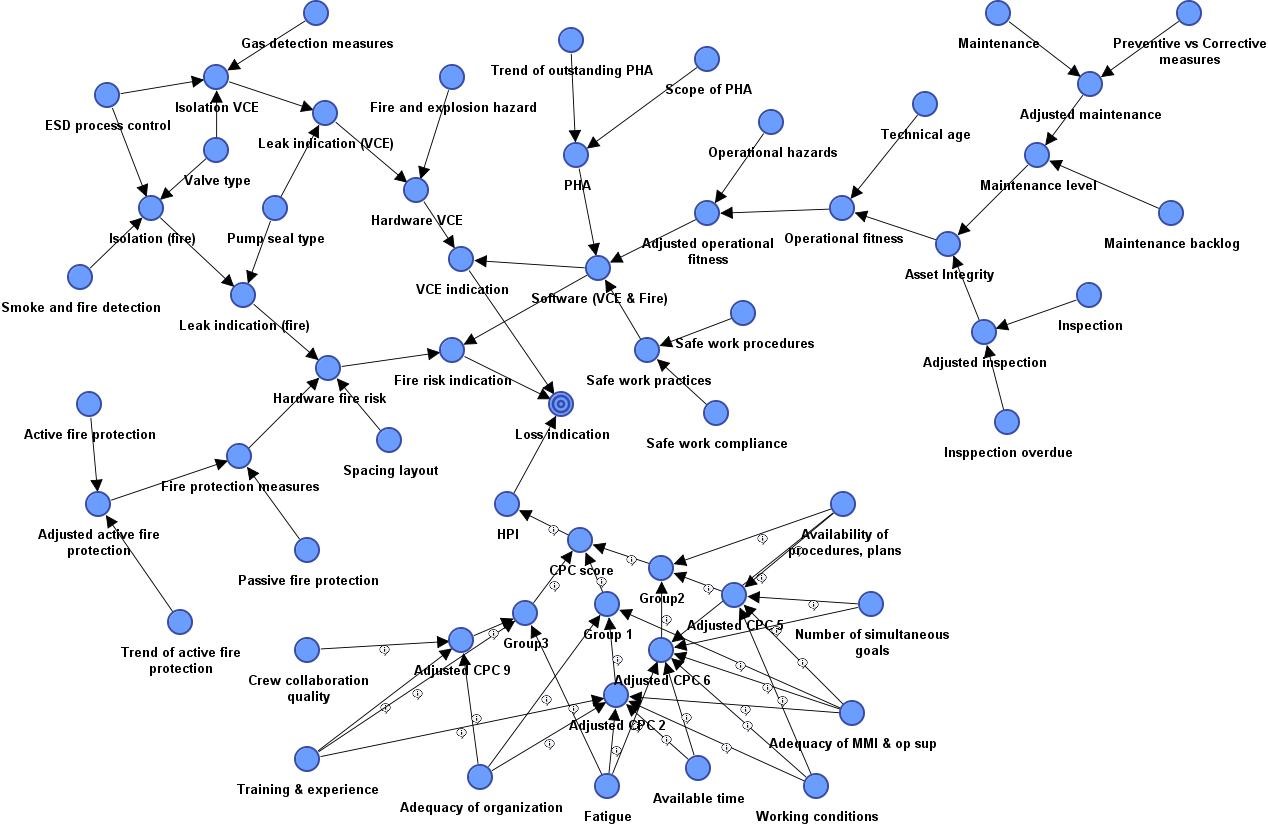Insurability Risk Assessment of Oil Refineries
Contact: Prof. Giovanni Sansavini
Refineries are highly complex and major hazardous installations containing large amount of flammable and toxic substances. An accident in a refinery has multidimensional consequences: severe property and asset damages, injury loss of personnel, toxic release of chemicals causing adverse health effects on nearby residents and large financial losses that may lead to company bankruptcy. This work looks at the risk profile of refineries from insurers’ decision-making perspective. As such, a top down approach is adopted to derive process safety key performance indicators (KPIs) for the two events historically known as main causes of biggest accidents in refineries: fire and vapor cloud explosion. Bayesian Belief Networks (BBNs) are used to develop a probabilistic model to quantify risk indication of refineries for fire and explosion events adjusted with human reliability analysis. Three types of KPIs are considered as BBN nodes: quantitative, qualitative, and directional indicators linked to technical, human and change trend factors respectively. The approach has a twofold practical use: guiding the insurers to select the plants with low potential risk exposures but also to inform the refineries about their own risk profile.

